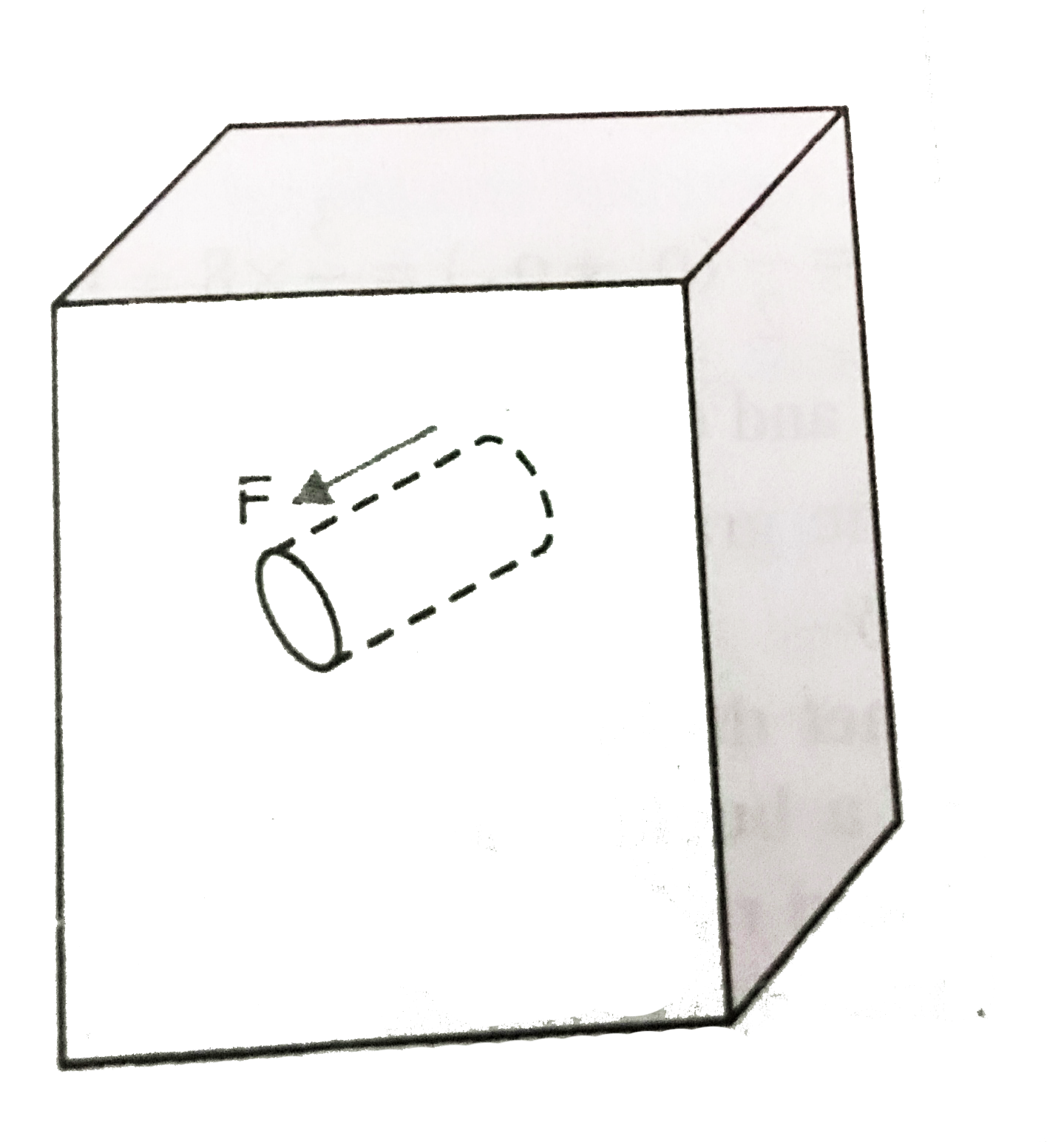Consider a 2 cm thick steel plate with an ultimate shear stress of 3.4×108Nm−2. Now, to punch a hole of diameter 2.8 cm on this plate, a minimum force of F kN is used. What is F10=?
The correct Answer is:D
To solve the problem of determining the minimum force F required to punch a hole in a steel plate, we can follow these steps:
Step 1: Understand the Problem
We have a steel plate that is 2 cm thick with an ultimate shear stress of 3.4×108N/m2. We need to punch a hole with a diameter of 2.8 cm. Our goal is to find the value of F10.
Step 2: Calculate the Area of the Hole
The area A of the circular hole can be calculated using the formula for the area of a circle:
A=πr2
where r is the radius of the hole. The diameter of the hole is 2.8 cm, so the radius r is:
r=2.8cm2=1.4cm=1.4×10−2m
Now, substituting the radius into the area formula:
A=π(1.4×10−2)2=π(1.96×10−4)≈6.15752×10−4m2
Step 3: Relate Force to Shear Stress
The force F required to punch the hole can be related to the ultimate shear stress τ and the area A using the equation:
F=τ⋅A
Given that the ultimate shear stress τ=3.4×108N/m2, we can substitute the values:
F=(3.4×108)⋅(6.15752×10−4)
Step 4: Calculate the Force
Now, performing the multiplication:
F≈3.4×108×6.15752×10−4≈209,339.68N
Converting this to kilonewtons:
F≈209.34kN
Step 5: Find F10
Now, we need to calculate F10:
F10≈209.3410≈20.934
Rounding this gives:
F10≈20.93
Final Answer
Thus, the final answer is:
F10≈20.93
We have a steel plate that is 2 cm thick with an ultimate shear stress of 3.4×108N/m2. We need to punch a hole with a diameter of 2.8 cm. Our goal is to find the value of F10.
The area A of the circular hole can be calculated using the formula for the area of a circle:
A=πr2
where r is the radius of the hole. The diameter of the hole is 2.8 cm, so the radius r is:
r=2.8cm2=1.4cm=1.4×10−2m
Now, substituting the radius into the area formula:
A=π(1.4×10−2)2=π(1.96×10−4)≈6.15752×10−4m2
The force F required to punch the hole can be related to the ultimate shear stress τ and the area A using the equation:
F=τ⋅A
Given that the ultimate shear stress τ=3.4×108N/m2, we can substitute the values:
F=(3.4×108)⋅(6.15752×10−4)
Now, performing the multiplication:
F≈3.4×108×6.15752×10−4≈209,339.68N
Converting this to kilonewtons:
F≈209.34kN
Now, we need to calculate F10:
F10≈209.3410≈20.934
Rounding this gives:
F10≈20.93
Thus, the final answer is:
F10≈20.93
Topper's Solved these Questions
Similar Questions
Steel ruptures when a shear of3.5×108Nm−2 is applied. The force needed to punch a 1cm diameter hole in a steel sheet 0.3cm thick is nearly:
View SolutionCalculate the force F needed to punch at 1.46 cm diameter hole in a steel plate 1.27cm thick fig. The ultimates shear stress of steel is 3.45×108Nm−2.

View Solution
Knowledge Check
The force required to punch a hole of diameter 2 mm, will be (If a shearing stress 4×108N/m2.)
A400πNB1600πNC1800πND1200πNThe metal cube of side 10 cm is subjected to a shearing stress of 104Nm−2. The modulus of rigidiy if the top of the cube is displaced by 0.05 cm with respect to its bottom is
A2×106Nm−2B105Nm−2C1×107Nm−2D4×105Nm−2
Two metal plates are held together by two rivets width radii of 0.2cm. If the maximum shear stress a single rivet can withstand is 5×108Nm−2, how much force must be applied parallel to the plates to shear off both the rivets?
View SolutionThe Young's modulus of steel is 1.9×1011Nm−2 . Calculate its value in dyne cm−2.
View SolutionIn a cylinder whose diameter is exactly 1.0 cm at 30∘C is to be slid into a hole of diameter 0.9997 cm in a steel plate at the same temperature. The minimum required rise in temperature of the plate is (The coefficient of linear expansion of steel = 12×10−6/∘C ) :
View SolutionWhat is the density of lead under a pressure of 2×108Nm−2 , if the bulk modulus of lead is 8×109Nm−2 and initially the density of lead is 11.4gcm−3 ?
View SolutionA lift is tied with a thick iton wires and its mass is 800 kg. if the maximum ac celeration of lift is 2.2ms−2 and the maximum safe stress is 1.4×108Nm−2 find the minimum diameter of the wire take g=9.8ms−2
View SolutionA wire increases by 10−3 of its length when a stress of 1×108Nm−2 is applied to it. What is the Young's modulus of the material of the wire?
View Solution
